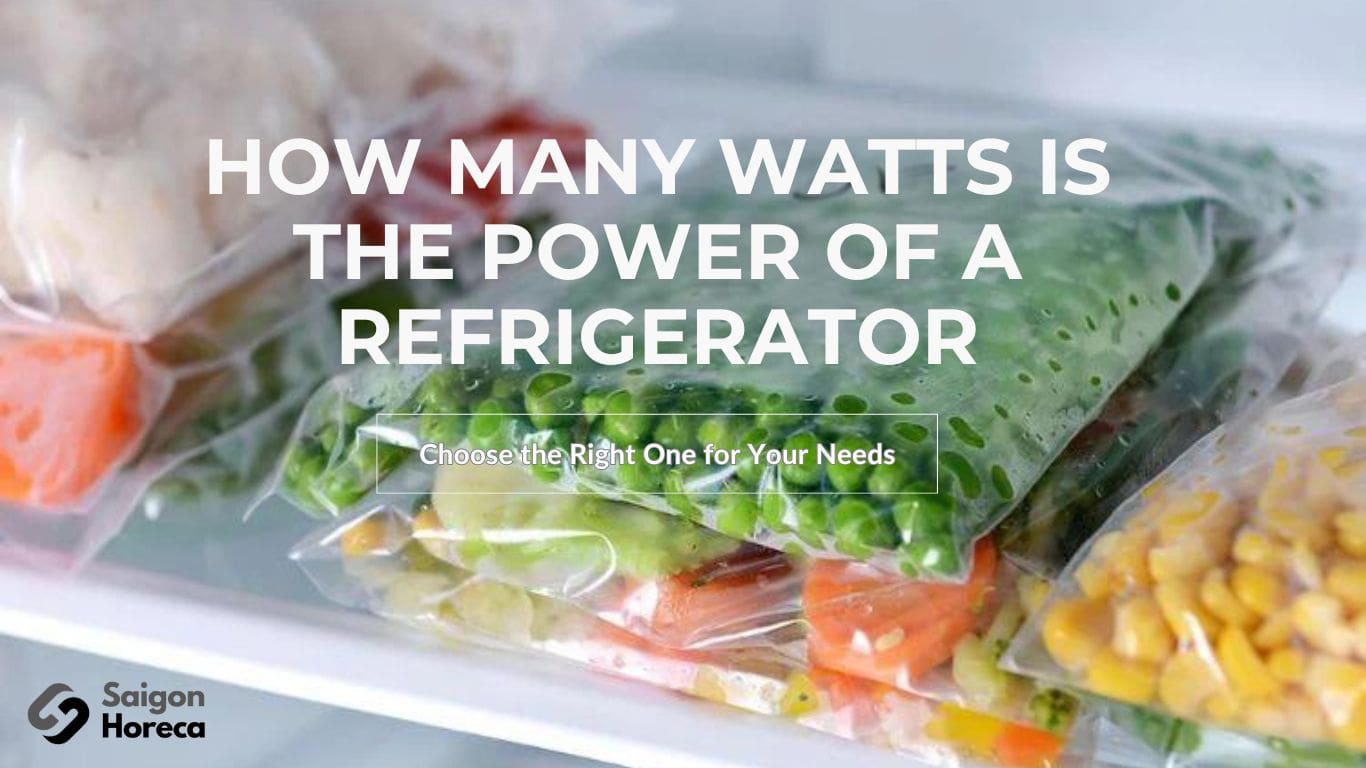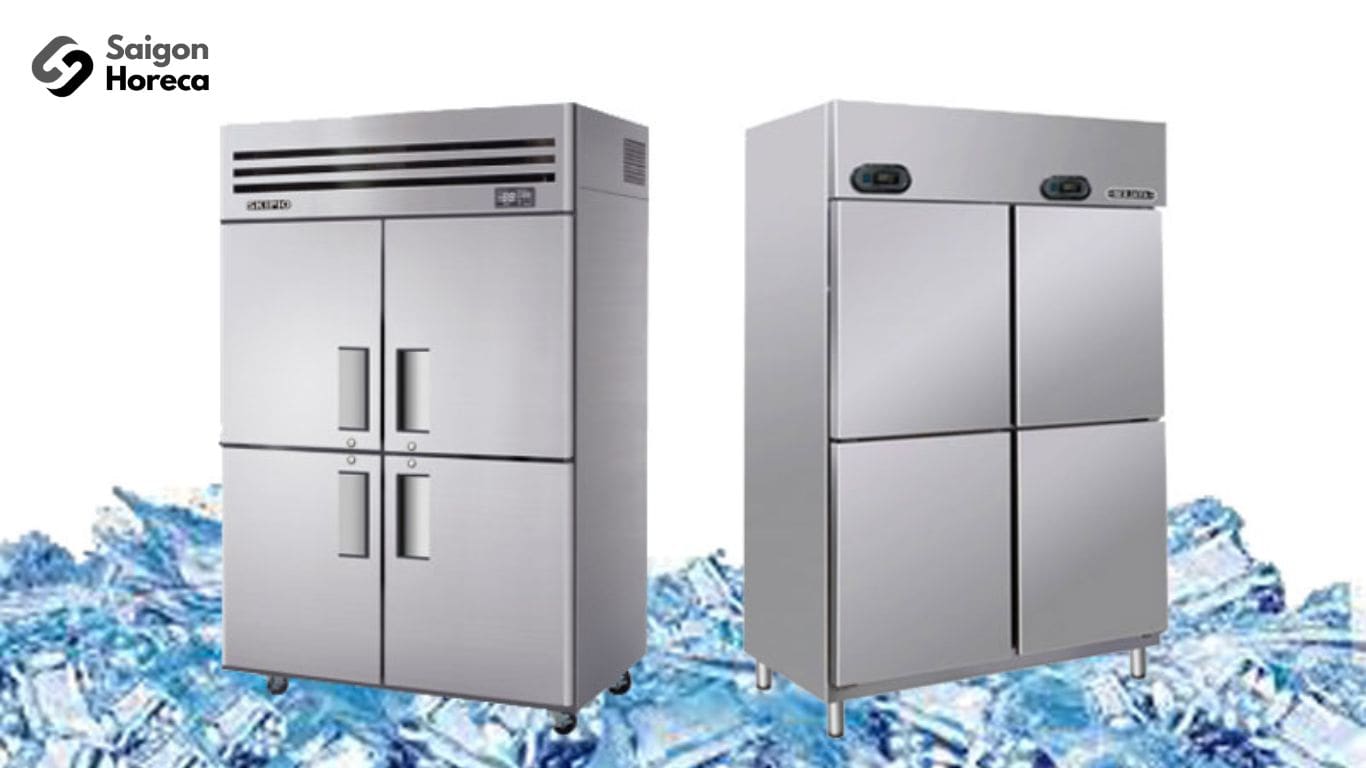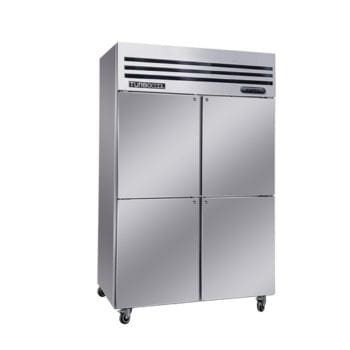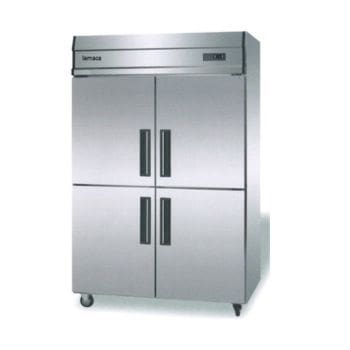Nội dung bài viết Đọc bài viết với ngôn ngữ Tiếng Việt Hệ thống thông gió bếp I. Overview A […]
Read more

In today’s modern world, refrigerators have become an indispensable part of our daily lives. However, when it comes to choosing a refrigerator, many people still struggle to determine the appropriate power capacity. The power of a refrigerator not only affects its cooling performance but also impacts the monthly electricity bill. Therefore, understanding the necessary power capacity for a refrigerator is crucial. In this article, we will explore the factors to consider when selecting the appropriate power capacity for your needs. Additionally, we will also discover what to know when referring to technical specifications to ensure the correct and efficient choice of a refrigerator.
The power capacity of a refrigerator is an important indicator displayed on the energy label or product packaging, helping users assess the electricity consumption capability of the refrigerator over a specific period, usually per hour. Through this parameter, you can easily estimate the monthly electricity cost that this refrigerator will generate. The power capacity is usually indicated on the energy label or packaging of the product, providing you with an overview of the amount of electricity consumed in a day, month, or year.
Depending on the capacity, features, and integrated technology, the power capacity of different types of refrigerators will vary. Power consumption typically ranges from about 72W to 300W. Large-capacity refrigerators equipped with Inverter technology often have lower power capacity compared to other conventional models.

Usually, the power capacity of a refrigerator will be listed on a specification label, placed in a visible location on the refrigerator, including on the outside of the refrigerator door, inside the refrigerator door, and sometimes on the back or bottom of the refrigerator. On this specification label, you will find information about the power capacity of the refrigerator, measured in units of W (Watt) or KW (Kilowatt). For example, if the power capacity of the refrigerator is 85W, this means that the refrigerator will consume 85W of electricity in one hour.
Below is a table of power capacities for Fujmak and Hoshizaki refrigerators according to their capacities for your reference:
| STT | Tên tủ | Dung tích (L) | Công suất điện (W) |
|---|---|---|---|
| 1 | Tủ lạnh 2 cánh HR-78MA-S – Hoshizaki | 569 | 237 |
| 2 | Tủ lạnh đứng 2 cánh – HRW-77LS4 Hoshizaki | 572 | 330 |
| 3 | Tủ lạnh đứng 4 cánh HRW-127LS4 – Hoshizaki | 1020 | 680 |
| 4 | Tủ lạnh 4 cánh HR-128MA-S – Hoshizaki | 1053 | 333 |
| 5 | Tủ lạnh đứng 4 cánh HRW-147LS4 – Hoshizaki | 1271 | 680 |
| 6 | Tủ lạnh đứng 6 cánh HR-188MA-S – Hoshizaki | 1622 | 413 |




To determine the amount of electricity consumed by a refrigerator in a day, we can use the following formula:
A = P x t
Where:
Example: A conventional refrigerator with a capacity of 160 liters and a power capacity of 90W (0.09kW).
A=0.09kW×24hours=2.16kWh≈2.16 kWh
Thus, in an average month of 30 days, the refrigerator will consume approximately 65 kWh of electricity. Calculating based on the current tier 2 electricity price of 1.866 VND/kWh, it would cost:
65×1.866=121.290 VND
Another example: Calculating the electricity consumption of a typical refrigerator: Suppose a typical refrigerator has a capacity of 130 liters and a power capacity of 85W.
A=85×24=2040W,
equivalent to 2.04 kWh of electricity consumed by the refrigerator in a day.
Inverter technology in refrigerators helps control power capacity to avoid energy waste, thereby reducing electricity consumption per day under optimal installation and usage conditions, often saving up to 40 – 60% of energy.
A clear example of calculating the electricity consumption of an inverter refrigerator:
For an inverter refrigerator with a capacity of 569 liters and a power consumption of 237W, the electricity consumption in a day is calculated as follows:
150×24=5688Wh,
equivalent to 5.688 kWh.
However, since this refrigerator utilizes inverter technology saving 40% of electricity, the actual electricity consumption will decrease by 40%, which means:
5688×60%≈3412Wh,
equivalent to 3.412 kWh in a day. This saves 40%, or 3.412 kWh.

The electricity consumption level of industrial refrigerators depends on various factors, including:
Type of refrigerator:
Capacity:
Technology:
Brand:
However, the electricity consumption level of refrigerators will mainly vary depending on the capacity of the refrigerator. The larger the capacity of the refrigerator, the higher the power consumption.
Here is a summary table of electricity consumption levels of some popular industrial refrigerator models:
| Loại tủ lạnh | Dung tích | Công nghệ | Mức tiêu thụ điện năng (kW/ngày) |
|---|---|---|---|
| Tủ lạnh mini có dung tích nhỏ | dưới 150 lít | Inverter | 0,6 – 0,7 |
| Tủ lạnh với dung tích trung bình mà các hộ gia đình thường sử dụng | 150 – 300 lít | Inverter | 0,7 – 1,2 |
| Tủ lạnh dung tích lớn | 300 – 500 lít | Inverter | 0,9 – 1,3 |
| Tủ lạnh dung tích trên 500 lít | >500 lít | Inverter | 1,2 |
Note:
To choose a refrigerator suitable for your family, you can consider the following factors:



To use the refrigerator most efficiently, follow these guidelines:
Place the refrigerator in a well-ventilated area, away from direct sunlight and high temperatures from external heat sources.
The ambient temperature around the refrigerator affects its electricity consumption.
Set the temperature inside the refrigerator and freezer compartments appropriately according to your usage needs.
Too low or too high temperatures will increase the refrigerator’s electricity consumption.
Do not overcrowd the refrigerator with too much food to ensure proper air circulation.
The refrigerator operates more efficiently when it is not overloaded.
Putting hot food in the refrigerator increases the internal temperature and leads to higher electricity consumption.
Allow hot food to cool down before placing it in the refrigerator.
Opening and closing the refrigerator door frequently increases electricity consumption.
Retrieve or store items in the refrigerator all at once to reduce the number of door openings.
Regularly clean the refrigerator to ensure the cooling system operates efficiently and saves electricity.
Inspect and maintain the refrigerator’s cooling system to ensure efficient operation.

Saigon Horeca has long established its position as a reliable and quality partner in the field of industrial refrigerator distribution. With a commitment to providing top-quality products, professional services, and dedicated support, we take pride in being the leading destination for all refrigeration needs in the food and service industry.
We understand that industrial refrigerators play a crucial role in preserving food and ensuring food safety. With a team of experienced and knowledgeable staff, Saigon Horeca is committed to providing high-quality, high-performance industrial refrigerators that meet all food safety standards.
The variety in models, capacities, and features of the industrial refrigerators we provide helps meet the needs of businesses in the food and service industry. From restaurants, hotels, to food manufacturing facilities and supermarkets, Saigon Horeca always has the best solution to meet every requirement.
With a vision focused on customer satisfaction and a goal of continuously improving service quality, Saigon Horeca is confident that every customer who comes to us will be welcomed and served with the utmost professionalism and dedication.
Let Saigon Horeca be your trusted partner in the field of industrial refrigeration, as we accompany you in improving production efficiency and product quality.
Monday - Friday
from 8h00 to 18h00
40 Street No. 6, Melosa Garden, Phu Huu District, HCMC
Contact anytime
Nội dung bài viết Đọc bài viết với ngôn ngữ Tiếng Việt Hệ thống thông gió bếp I. Overview A […]
Read moreLooking to elevate your grilled dishes with a Salamander Grill? With its ability to grill quickly and evenly while giving […]
Read more